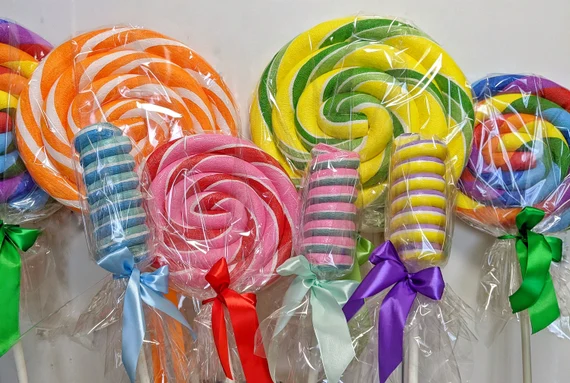prekforalldc.org – Lollipops are one of the most popular and iconic candies enjoyed by people of all ages. These sweet treats, characterized by a hard candy shell on a stick, have a rich history that spans centuries. In this article, we will explore the origins of lollipops, the science behind their making, and the various types and flavors that have captured the hearts of candy lovers around the world.
The Origins of Lollipops
The concept of the lollipop can be traced back to ancient times. The earliest form of lollipop-like candy was made by the Egyptians around 3000 BC, who created a sweet called “tyt,” made from honey. However, the modern lollipop, as we know it, began to take shape in the 18th century.
The Invention of the Lollipop
The term “lollipop” itself was first used in the early 1900s. It is believed to be a combination of the word “lolly,” meaning tongue, and “pop,” which refers to the popping sound made when removing the candy from the mouth. The invention of the lollipop stick is credited to George Smith, an American candy maker who, in 1908, decided to insert a stick into his hard candy to make it easier to eat. He trademarked the name “Lollipop” in 1931, and the rest is history.
The Science of Lollipop Making
Lollipop making is a fascinating process that involves a combination of sugar, corn syrup, water, and flavorings. The mixture is cooked to a high temperature, creating a hard candy shell. The science behind this involves the transformation of sugar molecules under heat, which results in the hard, brittle texture characteristic of lollipops.
The Role of Ingredients
- Sugar: The primary ingredient that provides the sweetness and structure.
- Corn Syrup: Helps prevent crystallization, resulting in a smooth texture.
- Water: Acts as a solvent for the sugar and is essential for the cooking process.
- Flavorings and Colorings: Add the desired taste and vibrant colors to the lollipops.
Types and Flavors of Lollipops
Lollipops come in a vast array of flavors and types, catering to every taste preference. From classic fruit flavors like cherry and grape to more exotic options like mango and passion fruit, there’s a lollipop for everyone. Additionally, there are novelty lollipops that include bubble gum centers, sour crystals, and even lollipops that change color or flavor.
Novelty Lollipops
- Giant Lollipops: Oversized versions that can be a fun centerpiece at parties.
- Swirl Pops: Lollipops with multiple colors and flavors swirled together.
- Character Pops: Shaped like popular characters from movies, TV shows, and books.
Lollipops in Popular Culture
Lollipops have made their mark in popular culture, appearing in movies, TV shows, and music. They are often associated with childhood, fun, and nostalgia. Characters like Lolly from “Charlie and the Chocolate Factory” and the lollipop-loving girl in the “Big Brother” song by Foster the People have further cemented the lollipop’s place in pop culture.
Lollipops in Advertising
Lollipops are also a common sight in advertising, used to attract attention and appeal to the sweet tooth of consumers. Their bright colors and playful shapes make them an effective tool for marketing campaigns targeted at both children and adults.
Conclusion
Lollipops are more than just a sweet treat; they are a symbol of joy and nostalgia. With their rich history, delightful flavors, and endless variations, lollipops continue to be a beloved candy enjoyed by people of all ages. Whether you prefer a classic cherry lollipop or a novelty giant swirl pop, there’s no denying the universal appeal of this simple yet delightful confection.
